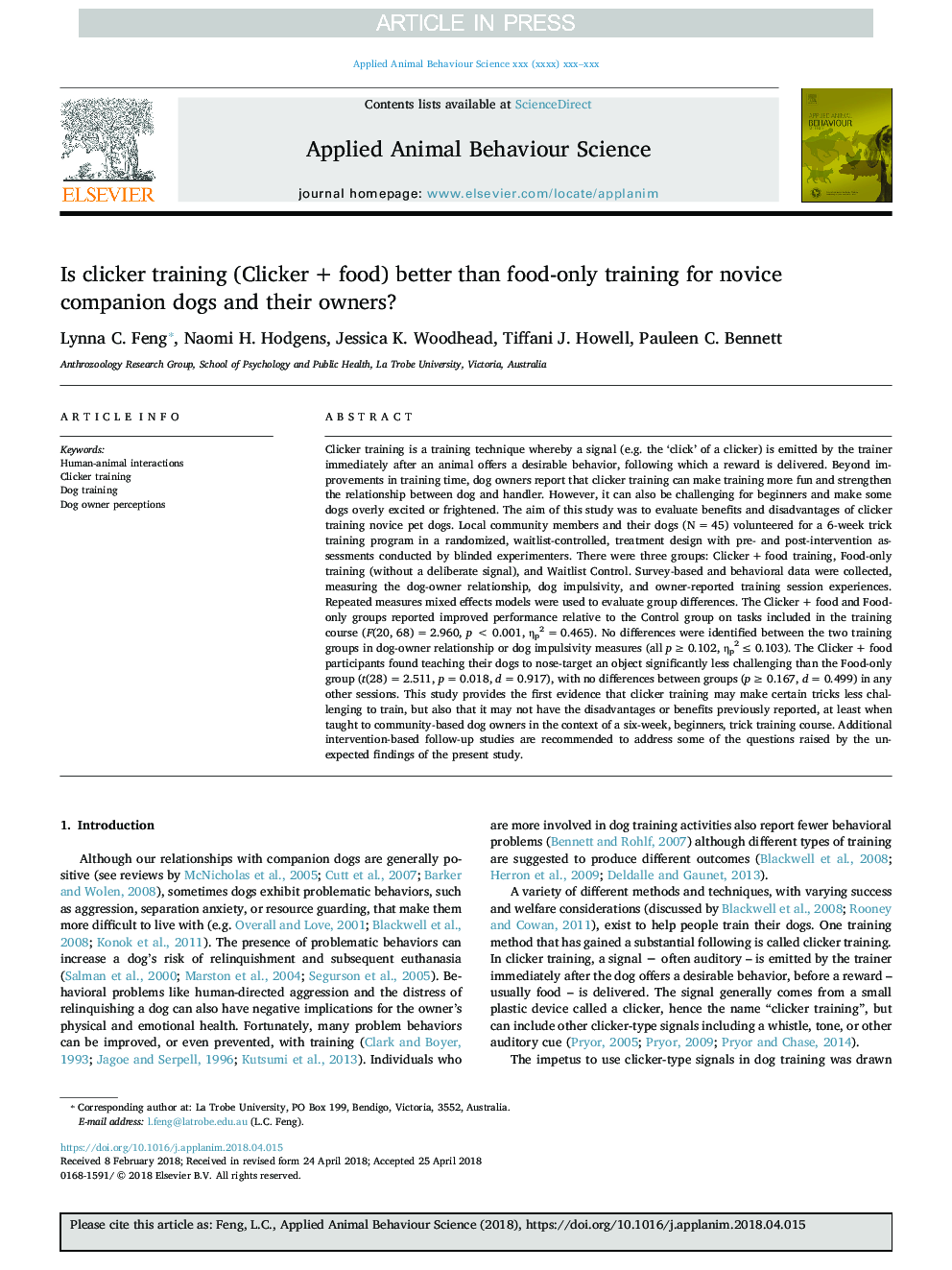| Article ID | Journal | Published Year | Pages | File Type |
|---|---|---|---|---|
| 8882757 | Applied Animal Behaviour Science | 2018 | 13 Pages |
Abstract
Clicker training is a training technique whereby a signal (e.g. the 'click' of a clicker) is emitted by the trainer immediately after an animal offers a desirable behavior, following which a reward is delivered. Beyond improvements in training time, dog owners report that clicker training can make training more fun and strengthen the relationship between dog and handler. However, it can also be challenging for beginners and make some dogs overly excited or frightened. The aim of this study was to evaluate benefits and disadvantages of clicker training novice pet dogs. Local community members and their dogs (Nâ¯=â¯45) volunteered for a 6-week trick training program in a randomized, waitlist-controlled, treatment design with pre- and post-intervention assessments conducted by blinded experimenters. There were three groups: Clickerâ¯+â¯food training, Food-only training (without a deliberate signal), and Waitlist Control. Survey-based and behavioral data were collected, measuring the dog-owner relationship, dog impulsivity, and owner-reported training session experiences. Repeated measures mixed effects models were used to evaluate group differences. The Clickerâ¯+â¯food and Food-only groups reported improved performance relative to the Control group on tasks included in the training course (F(20, 68)â¯=â¯2.960, pâ¯<â¯0.001, ηp2â¯=â¯0.465). No differences were identified between the two training groups in dog-owner relationship or dog impulsivity measures (all pâ¯â¥â¯0.102, ηp2â¯â¤â¯0.103). The Clickerâ¯+â¯food participants found teaching their dogs to nose-target an object significantly less challenging than the Food-only group (t(28)â¯=â¯2.511, pâ¯=â¯0.018, dâ¯=â¯0.917), with no differences between groups (pâ¯â¥â¯0.167, dâ¯=â¯0.499) in any other sessions. This study provides the first evidence that clicker training may make certain tricks less challenging to train, but also that it may not have the disadvantages or benefits previously reported, at least when taught to community-based dog owners in the context of a six-week, beginners, trick training course. Additional intervention-based follow-up studies are recommended to address some of the questions raised by the unexpected findings of the present study.
Related Topics
Life Sciences
Agricultural and Biological Sciences
Animal Science and Zoology
Authors
Lynna C. Feng, Naomi H. Hodgens, Jessica K. Woodhead, Tiffani J. Howell, Pauleen C. Bennett,
